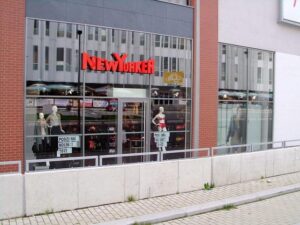Addressing the Child Care Affordability Crisis in New York City: Pathways to Support Families and Strengthen Communities
Understanding the Barriers to Affordable Child Care for NYC Families
Despite New York City’s wealth of resources and services, many households face significant financial hurdles when trying to secure dependable child care. The imbalance between high demand and limited availability results in extensive waiting lists, particularly in neighborhoods with fewer services. This shortage disproportionately impacts working-class and middle-income families, who often must decide between costly private care or leaving their children unsupervised.
Several factors exacerbate these difficulties:
- Geographical Limitations: Many child care facilities are located far from parents’ workplaces or residences, leading to longer commutes and added transportation costs.
- Variable Quality Standards: Affordable options that also meet safety and developmental benchmarks are scarce, making it challenging for families to find trustworthy providers.
- Complex Eligibility Criteria: Subsidy programs often have intricate application processes and strict requirements, causing many eligible families to miss out on assistance.
| Challenge | Effect on Families |
|---|---|
| High Child Care Expenses | Consumes upwards of 22% of monthly household income for many |
| Insufficient Availability | Approximately 40% of families face waitlists nationwide |
| Subsidy Accessibility | Only about half of eligible families successfully obtain aid |
Reviewing NYC’s Current Efforts to Reduce Child Care Costs
New York City has implemented a variety of programs designed to ease the financial strain of child care, including expanded subsidy offerings, collaborations between public agencies and private providers, and the growth of Early Learn centers. While these initiatives have made meaningful progress, challenges persist. For instance, subsidy income limits often exclude many middle-income families who still struggle with high fees. Pilot projects partnering with local providers have improved access in select areas but have yet to be scaled citywide, especially in boroughs like the Bronx and Staten Island.
Notable achievements from these programs include:
- A 15% increase in enrollment for subsidized child care slots over the past two years
- An average 20% reduction in monthly fees for families qualifying for assistance
- Expansion of professional development and training opportunities for child care workers
- Persistent disparities in availability, with long waitlists remaining in Queens and Staten Island
| Program | Effect on Costs | Scope |
|---|---|---|
| Child Care Subsidies | Lowered fees by 20% | Low-income households |
| Early Learn Program Expansion | Added 3,000 new child care slots | Citywide |
| Provider Incentive Programs | Increased participation by 10% | Targeted boroughs |
Expanding Child Care Capacity and Strengthening the Workforce
Addressing the shortage of child care options requires a comprehensive strategy that tackles both facility availability and workforce development. Innovative collaborations between the public sector and private enterprises are facilitating the construction and renovation of child care centers throughout the city. Advocates are also pushing for more flexible zoning regulations to support smaller, community-based providers, which can increase capacity without the high costs associated with large-scale developments. These efforts aim to cultivate a diverse and adaptable child care network that meets the varied needs of New York families.
Equally important is investing in the child care workforce. Enhancing training programs, improving compensation, and creating clear career advancement pathways are essential to attracting and retaining skilled educators. The city has introduced wage supplements and scholarship opportunities for certification programs to support this goal. Below is a summary of key workforce initiatives currently being proposed or implemented:
| Initiative | Description | Anticipated Outcome |
|---|---|---|
| Wage Supplements | Bonuses for educators working in high-demand neighborhoods | Higher retention rates |
| Professional Development Grants | Funding for advanced training and certification courses | Improved quality of care |
| Career Advancement Programs | Defined pathways from assistant roles to lead teacher positions | Enhanced career growth opportunities |
Policy Proposals for Equitable and Sustainable Child Care Access
To ensure child care is both affordable and accessible, policymakers must prioritize increased investment in public child care programs across all boroughs. Expanding sliding scale subsidies that adjust fees based on family income can help eliminate financial barriers for many households. Furthermore, bolstering workforce development through competitive wages, benefits, and career advancement opportunities will reduce turnover and improve the consistency and quality of care.
Additional policy priorities include:
- Offering incentives to establish new child care centers in underserved communities
- Simplifying licensing and regulatory processes to encourage more providers to enter the formal system
- Supporting culturally responsive and inclusive care models that reflect the city’s diverse population
| Policy Focus | Expected Impact | Priority Level |
|---|---|---|
| Subsidy Program Expansion | Lowered financial burden on families | High |
| Investment in Provider Workforce | Enhanced quality and stability of care | High |
| Incentives for New Centers | Improved access in underserved neighborhoods | Medium |
Conclusion: Building a Brighter Future Through Accessible Child Care
As New York City continues to confront the escalating costs of child care, recent policy advancements and community efforts offer hope for many families. Although obstacles remain, the commitment from city leaders, advocates, and local organizations to expand affordable, high-quality child care is clear. Ensuring that every family can access reliable child care is not only vital for economic stability but also a foundational investment in the city’s future workforce and well-being. Ongoing collaboration and proactive policymaking will be essential to achieving this critical goal.













